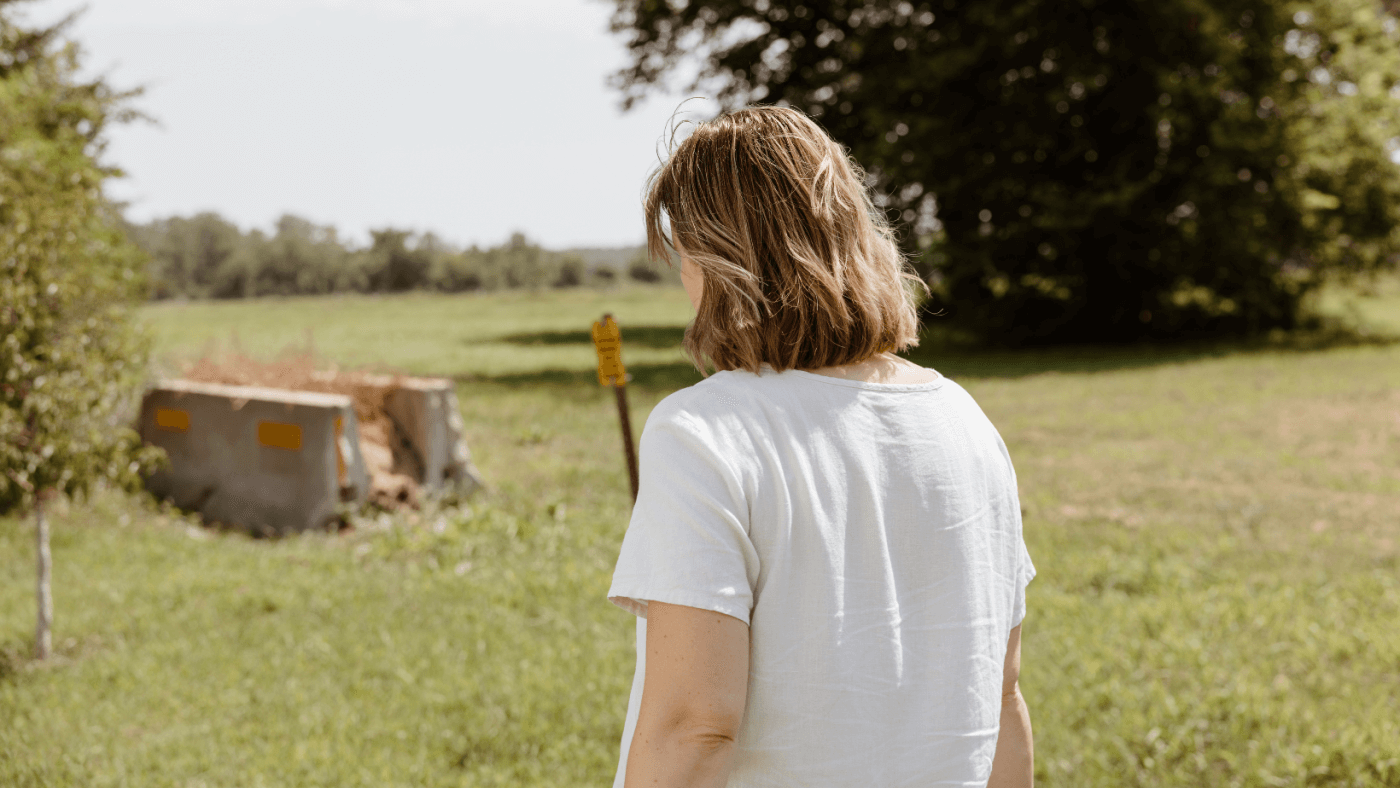When I started Thrifty, it was with the idea of extending the concept of a low-waste business beyond how we sell our fabrics. Part of my philosophy is utilizing all of what is available to me. As it happens, the Thrifty warehouse sits on a decent sized plot of land. Since we're about as rural as you can get out here on the Kansas prairie, one of my long-term goals for the shop has been creating an edible landscape.
If I had a magic wand, all of the clover and grass around the building would morph into a biodiverse garden through sheer magic. But since I don't, it's a long-haul ambition to turn our ornamental lawn into an abundant green space. I don't mind, though, cause I've always been a fan of slow living and that mindset can definitely extend to my garden practices.

Several months ago, I set out to give my future plants a solid start by building up the soil. I do this by adding organic material and attracting as many wiggly worm friends and beneficial microbes as possible. I usually start this process a good six months before any garden project.
As a rule, I like my plants hardy, prolific, and self-motivated, so anything high-maintenance usually doesn't last for long (just ask the plants in my home garden). Due to this - and the long process of building up the soil - I haven't gotten much in the ground yet. So far, we're working with a cherry tree and a peach tree that I planted last fall.
Unfortunately, the planting was followed up by a rapid (and probably premeditated) invasion of Japanese Beatles. Those little nasties use their gorgeous green carapaces to dazzle you into distraction so you don't notice them making a buffet out your fruit trees. By the time I caught on, the cherry tree was basically a goner.
I'm holding out hope she'll rally.

In addition to the fruit trees, we built our first raised bed over a particularly productive weekend. I plan to plant some garlic in there this fall with a stretch goal of adding in some herbs and a few annuals like tomatoes and pumpkins. We compost all of our organic matter from working at the shop and the employees regularly bring their compost from home, so we have a good start on future fertilizer.
Around the front of the building I've planted some ornamental grasses and bushes. I plan to expand that area over time to create homes for our pollinator friends. The recent news that Monarchs are endangered has got me down, so perhaps I'll add in some native milkweed.
Eventually, I'd like to round off the space with a few berry bushes and trellises for climbers. The cherry on top of my vision is a small deck for myself and my employees to enjoy on our breaks.
Gardener's Tip: When I need to do some quick planting, I usually rely pretty heavily on rabbit manure, which is basically pure magic. Since it has a fairly neutral pH you can put it directly on plants and they won't end up getting "burned", which is common with other forms of manure and compost.
I secure my bunny poo from my parents, but if you know anyone with bunnies and are comfortable asking for a (slightly odd) favor, I recommend it! I've seen rabbit manure for as high as $40 for a 5 gallon bucket at our local Farmer's Market, so friends with bunnies are a great thrifty alternative.
Check back for updates and I'll keep you posted on our slow gardening process.
Happy Sewing,
Liv

